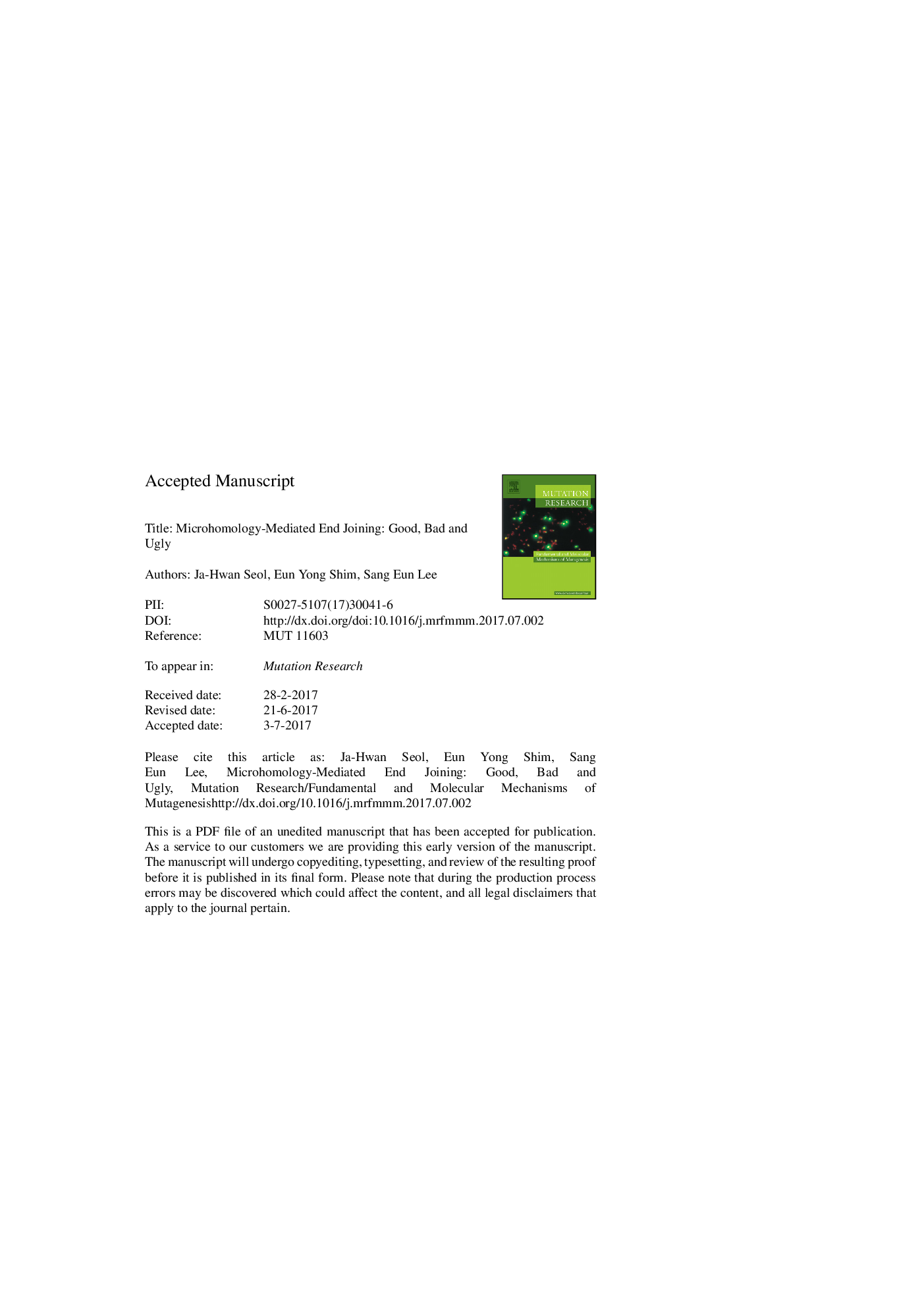| کد مقاله | کد نشریه | سال انتشار | مقاله انگلیسی | نسخه تمام متن |
|---|---|---|---|---|
| 8455635 | 1548299 | 2018 | 25 صفحه PDF | دانلود رایگان |
عنوان انگلیسی مقاله ISI
Microhomology-mediated end joining: Good, bad and ugly
ترجمه فارسی عنوان
پیوستن انتهای میکرومولوژیک: خوب، بد و زشت
دانلود مقاله + سفارش ترجمه
دانلود مقاله ISI انگلیسی
رایگان برای ایرانیان
کلمات کلیدی
موضوعات مرتبط
علوم زیستی و بیوفناوری
بیوشیمی، ژنتیک و زیست شناسی مولکولی
تحقیقات سرطان
چکیده انگلیسی
DNA double-strand breaks (DSBs) are induced by a variety of genotoxic agents, including ionizing radiation and chemotherapy drugs for treating cancers. The elimination of DSBs proceeds via distinctive error-free and error-prone pathways. Repair by homologous recombination (HR) is largely error-free and mediated by RAD51/BRCA2 gene products. Classical non-homologous end joining (C-NHEJ) requires the Ku heterodimer and can efficiently rejoin breaks, with occasional loss or gain of DNA information. Recently, evidence has unveiled another DNA end-joining mechanism that is independent of recombination factors and Ku proteins, termed alternative non-homologous end joining (A-NHEJ). While A-NHEJ-mediated repair does not require homology, in a subtype of A-NHEJ, DSB breaks are sealed by microhomology (MH)-mediated base-pairing of DNA single strands, followed by nucleolytic trimming of DNA flaps, DNA gap filling, and DNA ligation, yielding products that are always associated with DNA deletion. This highly error-prone DSB repair pathway is termed microhomology-mediated end joining (MMEJ). Dissecting the mechanisms of MMEJ is of great interest because of its potential to destabilize the genome through gene deletions and chromosomal rearrangements in cells deficient in canonical repair pathways, including HR and C-NHEJ. In addition, evidence now suggests that MMEJ plays a physiological role in normal cells.
ناشر
Database: Elsevier - ScienceDirect (ساینس دایرکت)
Journal: Mutation Research/Fundamental and Molecular Mechanisms of Mutagenesis - Volume 809, May 2018, Pages 81-87
Journal: Mutation Research/Fundamental and Molecular Mechanisms of Mutagenesis - Volume 809, May 2018, Pages 81-87
نویسندگان
Ja-Hwan Seol, Eun Yong Shim, Sang Eun Lee,
